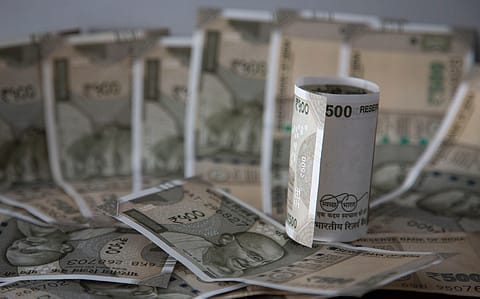Capital outlay by states to take a hit this fiscal on rising revenue deficit, expenditure: Crisil
Given their limited resources, the ability of the states to balance social expenditure with capital outlay will remain a key factor in assessing their credit outlook

Raising concerns on quality of expenditure by the states, which is getting lopsided to revenue expenditure leading to revenue deficit, Crisil today said growth in capital outlay by the state governments may remain subdued to 4%-6%, much below the decadal average of 11%.
“Capital outlay of states is expected to grow a moderate 4-6% this fiscal to Rs 7.4-7.5 lakh crore, slower than 7% last fiscal and well below the decadal average of ~11% as rising revenue deficit limits their financial flexibility,” Crisil said in a note today.
This came across in a study done by the agency in which top 18 states, accounting for 94% of the overall capital outlay of all states, it said.
“What’s driving up the revenue deficit for states? Well, part of it is due to slower pace of growth in revenue receipts owing to moderation in GST revenue post rate rationalization, slowing devolutions from Centre and lower nominal gross domestic product (GDP) growth driven by easing inflation,” Crisil said in a release.
“On the other hand, revenue expenditure is set to grow sharply at 7-9%, driven by committed spending (44% of total revenue expenditure) and increased allocations for social welfare schemes mainly in the form of direct benefit transfers,” it added.
“Higher increase in revenue expenditure will widen revenue deficit by 45-50% to Rs 3.0-3.1 lakh crore this fiscal. This will lower fiscal space and borrowing capacity for carrying out capital outlays. With centre’s 50-year interest free capex loans to states remaining at similar level of Rs. 1.5 lakh crore, we expect growth in capital outlay to moderate to 4-6% this fiscal,” said Anuj Sethi, senior director, Crisil Ratings.
“Typically, states incur 23-27% of their capital outlay towards the transport segment for the development of roads and bridges, followed by irrigation at 18-22%. The WSS segment, accounting for 16-20%, is mainly supported by centrally sponsored schemes such as the Jal Jeevan Mission and Pradhan Mantri Awas Yojana, among others,” it said.
Recommended Stories
Crisl pointed out that government capex has a higher multiplier effect on economic output than revenue expenditure. Typically, that crowds in private investment, induces an increase in overall investments and contributes to economic growth.
“Given their limited resources, the ability of the states to balance social expenditure with capital outlay will remain a key factor in assessing their credit outlook,” it said.